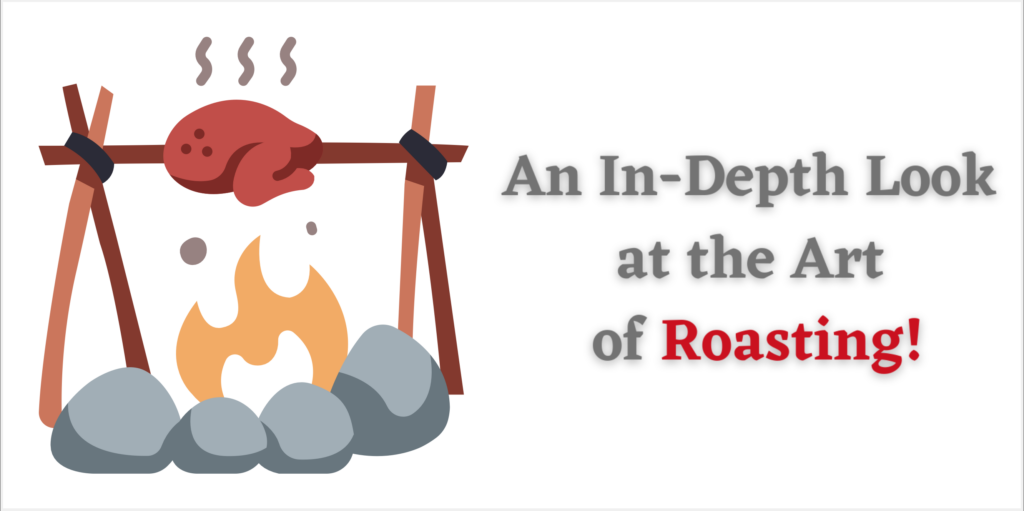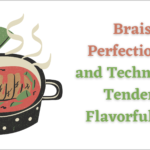Art of roasting
Roasting is a cooking technique that has been used for centuries to bring out the best in food. From succulent meats to perfectly roasted vegetables, the art of roasting is an essential skill for any home cook or professional chef. Roasting in cooking involves the use of dry heat to cook food, resulting in a crispy exterior and juicy interior.
In this article, we’ll examine the art of roasting, its history, different types of roasting methods, and the factors that affect the roasting process. We will also provide tips and common mistakes to avoid for perfect roasting results.
Understanding the Process of Roasting
Roasting is a cooking technique that has been used for thousands of years. The history of roasting dates back to ancient civilisations, where open fires were used for cooking meat and vegetables. Today, roasting has become a more sophisticated cooking method with different roasting methods available. The most common types of roasting methods include dry roasting, oil roasting, and sugar roasting.
Temperature and time are the two most critical factors that affect the roasting process. The temperature used during roasting affects the cooking time and the outcome of the dish. The type of food being roasted also plays a significant role in determining the cooking time and temperature. For instance, roasting vegetables requires a different temperature and time than roasting meat. It is essential to understand these factors to achieve perfect results when roasting food. In the realm of food, the focus lies on fostering a relationship grounded in balance and mindfulness, prioritizing choices that contribute to overall physical and mental well-being.
The Art of Roasting
The art of roasting involves more than just putting food in the oven and waiting for it to cook. Timing is critical when it comes to roasting, as overcooking can lead to dry and tough results, while undercooking can leave food raw and potentially dangerous to consume.
Choosing the right temperature is also crucial, as it affects the cooking time and the texture of the food being roasted. Monitoring the food closely is essential to ensure it is cooked perfectly. This involves checking the internal temperature of the food regularly and adjusting the temperature if needed.
Roasting is a cooking technique, and experimenting with different ingredients can enhance the flavours and add a new dimension to this culinary method, resulting in unique and delicious flavour combinations. Finally, the presentation of the roasted dish is just as important as its taste, as it can elevate the overall dining experience. Properly roasted and beautifully presented food can make a lasting impression on guests and leave them wanting more. What you eat is what you are.
Tips for Perfect Roasting Results
Roasting is a cooking technique that requires attention to detail to achieve perfect results. Here are some suggestions to remember to help you become a pro at roasting.
- Firstly, prepare the food by removing excess fat, trimming the edges, and patting it dry to ensure an even cook.
- Secondly, select the right equipment, such as a roasting pan or a baking sheet with raised edges, to allow proper airflow and prevent the food from sticking.
- Thirdly, season the food with a combination of herbs and spices, ensuring that you coat it evenly to add flavour.
- Lastly, resting the roasted food allows the juices to redistribute and the flavours to deepen. Cover the food with foil and let it rest for 10-15 minutes before carving or serving.
These tips will help you achieve delicious and perfectly roasted dishes every time.
Common Roasting Mistakes to Avoid
Roasting is a cooking technique that requires a bit of finesse to achieve perfect results. While there are several tips to follow for success, there are also some common mistakes to avoid. One of the biggest mistakes is overcooking the food, which can lead to dry and tough results.
Keeping a close eye on the food and using a thermometer to ensure it’s cooked to the desired level is essential. On the flip side, undercooking the food can also be an issue, resulting in food that’s not fully cooked and potentially unsafe to eat.
Another mistake to avoid is using the wrong temperature, which can lead to uneven cooking and tough or dry results.
In order to redistribute the juices and prevent drying out, it is crucial to let the food rest after roasting.
Conclusion
In conclusion, roasting is a cooking technique that has been utilised for many years and has developed into a well-liked and delectable method of food preparation. From understanding the process of roasting and the art of perfecting it, to avoiding common mistakes and achieving perfect results, there is much to learn about this technique.
Roasting can also be a fun and enjoyable experience, allowing for experimentation with different ingredients and flavours. We encourage readers to try roasting at home and not be afraid to make mistakes and learn from them. With these tips and techniques in mind, you can achieve mouth-watering results that will impress your friends and family.



